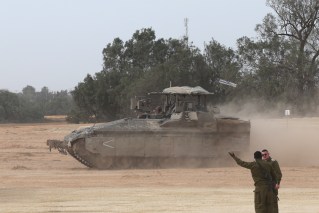Mauritius oil spill: Volunteers put health on the line to clean up environmental disaster

If Australia’s Great Barrier Reef suddenly became contaminated with hundreds of tonnes of toxic black sludge, sparking an environmental emergency, how far would you go to save the beloved natural wonder?
Would you put your health at risk?
That’s not a hypothetical question for the people of Mauritius, who have put their physical welfare second to the environmental crisis that ensued after a Japanese bulk carrier leaked at least 1000 tonnes of oil into the island’s once-pristine waters.

Hundreds of volunteers required medical assistance. Photo: Alexey Aryutov
Residents weren’t sufficiently warned about the toxicity of the fuel oil before they joined the massive clean-up effort, said local oceanographer Vassen Kauppaymuthoo.
“They went in with a good heart because they were feeling the pain of the environment being damaged, but this exposed them to levels of toxicity which I think need to be understood,” he told The New Daily.
Concerns have been raised that many volunteers did not wear the necessary protective gear, leaving them potentially open to health issues later in life.

Many volunteers did not have access to PPE. Photo: Alexey Aryutov
The New Daily understands Greenpeace did not call on its supporters to participate in the citizen-led clean-up operation.
Based on knowledge from previous oil spills, the environmental NGO recognised that the clean-up can pose a potential risk to the health of those involved.
Yet thousands of Mauritians worked around the clock to minimise as much as possible the environmental damage.
Local GP Dr Yanesh Bishundat said he has treated about 150 people for exposure to the oil fumes and injuries sustained in the course of the clean-up.

Volunteers were neck-deep in the contaminated black sludge. Photo: Alexey Aryutov
They included headaches, dizziness, nausea, eye wounds, cuts, scrapes and skin rashes.
“Other people who suffer from respiratory disorders such as asthma and COPD (chronic obstructive pulmonary disease) have had a worsening of their pre-existing conditions after being exposed to the contaminated air,” Dr Bishundat said.

Thousands worked day and night to remove the oil from the water. Photo: Alexey Aryutov
Dr Bishundat said harmful exposure to hydrocarbons contained in crude oil can put people at risk of developing cancer, fetal malformations or immune system disorders.
“Since it was like a rush and everyone wanted to help, many people did not have the right kind of gear,” he said. “We were not prepared for this.”
The MV Wakashio had been carrying 4000 tonnes of fuel oil when it ran aground on a coral reef near Pointe d’Esny on July 25.
It began leaking oil on August 6, before breaking in two on August 15.

The MV Wakashio bulk carrier broke into two parts near Blue Bay Marine Park. Photo: Getty
By that time, some 3000 tonnes of oil had been pumped out of the damaged ship – not enough to prevent the Mauritius government needing to declare an environmental emergency.
Some 1000 tonnes of oil spread through the turquoise waters outside Mahébourg village, on the south-eastern coast of the island.

The oil gave off a strong odour. Photo: Alexey Aryutov
“Personally, I cried,” oceanographer Kauppaymuthoo said.
“Then, of course, it was also a mixture of sadness and anger. How could the authorities allow this to happen?”
The ship’s captain, Sunil Kumar Nandeshwar, is being held by police on charges of endangering safe navigation.
Residents with only gloves for protection tried to contain the spill by physically removing as much oil as possible from the mangroves and ocean.
To prevent the slick’s spread, some built floating barriers (so-called booms) out of straw, dried sugar cane leaves and donations of human hair, which absorbs oil.

The booms acted as physical barriers to the oil. Photo: Alexey Aryutov
Many donned personal protective equipment but not everyone wore – or had access to – the right gear.
Respirators were needed to stop volunteers breathing in airborne toxins but “many people just took on the COVID mask, the N95 mask, and went there thinking it could help them”, said Dr Bishundat, who was on site.
“It doesn’t work to remove hydrocarbon contaminated air,” he said, adding that “we did not have enough appropriate overalls (biohazard suits) for each and everyone who wanted to go on the shoreline to clean”.

The long-term health effects of the oil spill have yet to be determined. Photo: Alexey Aryutov
Dr Saleem Peerally, senior specialist and director of the island’s Diagnos Clinique, said the medical centre attended to about 100 people affected by exposure to the oil spill.
“The long term effect is peripheral neuropathy, otherwise most of the symptoms are reversible,” Dr Peerally said.
“Some had a little heatstroke due to long hours of work and dehydration, and many suffering from hypoglycemia due to exhaustion.”

Volunteers disposed of the oil in buckets and drums. Photo: Alexey Aryutov
Dr Liz Bashford, a spokeswoman for Doctors for the Environment Australia, said there is reason to fear harm.
“There are certainly toxic compounds in the oil, However, while I’m not sure if they can be absorbed through the skin, they certainly can be absorbed through cuts,” Dr Bashford said.
There’s not enough research to know what exactly the long-term impacts are, she added.
But as one article in The Lancet medical journal put it: “Too often the responses to (oil spill) disasters have been mainly focused on ecological and financial aspects, and the consequences of such disasters to health have not received the attention they deserve.”






